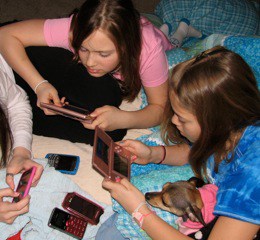Blog
Children’s Stress and Anxiety

Children’s Stress and Anxiety
Anxiety symptoms and disorders are the number one health problem in America. Anxiety Disorders in children are sometimes overlooked or misdiagnosed and if left untreated will most likely progress into further complications.
But how do parents decide what is normal anxiety and what needs to be looked at closer?
All children experience anxiety. Anxiety kids is expected and normal at specific times in development. For example, children 8 months through the preschool years may show distress or anxiety at times of separation from their parents. Young children may have short-lived fears, such as fear of the dark, storms, animals, or strangers. Anxious children are often overly tense or uptight. Some may seek a lot of reassurance, and their worries may interfere with activities. Parents should not discount a child’s fears. Parents should be alert to the signs of severe anxiety so they can intervene early to prevent complications. Here is a list of different symptoms of anxiety that children can experience.
Symptoms of separation anxiety include:
- Constant thoughts and intense fears about the safety of parents and caretakers
- Refusing to go to school
- Frequent stomachaches and other physical complaints
- Extreme worries about sleeping away from home
- Being overly clingy
- Panic or tantrums at times of separation from parents
- Trouble sleeping or nightmares
Symptoms of phobia include:
- Extreme fear about a specific thing or situation (ex. dogs, insects, or needles)
- The fears cause significant distress and interfere with usual activities
Symptoms of social anxiety include:
- Fears of meeting or talking to people
- Avoidance of social situations
- Few friends outside the family
Other symptoms of anxious children include:
- Many worries about things before they happen
- Constant worries or concerns about family, school, friends, or activities
- Repetitive, unwanted thoughts (obsessions) or actions (compulsions)
- Fears of embarrassment or making mistakes
- Low self esteem and lack of self-confidence
It is always a good idea to seek professional advice if your child is showing any of these signs. Coordinate your evaluation with others who are around your child like teachers or day care workers. Read articles, blogs and any information you can find about anxiety symptoms in children to educate yourself and provide the best treatment for your child. Information gathered from the ADAA website
Here is a list of some organizations to seek professional advice and information about anxiety symptoms and treatment.
For more articles on children and anxiety:
For less severe cases of anxiety children can learn a technique to rid themselves of fears or distress by trying this Bubble Blowing technique. Children can take their fears and worries and send them away in a bubble. This visualization exercise is a great way to empower your child and teach them life long skills.









